Although the U.S. wind industry seems forever changing, one of its constants is a goal to lower costs by placing turbines in windier areas, which today means offshore. To take advantage of the stronger and steadier winds there, tower manufacturers are looking for ways to reduce the high costs associated with manufacturing for and installing in this challenging setting.
The good news is that advances in tower design and manufacturing are producing structures capable of withstanding greater environmental challenges and expanding the industry geographically. The move offshore means 80 to 100-m towers for which there are a few fabrication challenges. Compared to onshore versions, for instance, offshore towers are typically larger and must resist fatigue loads associated with higher wind speeds and larger generators, as well as corrosion and colder temperatures.
A typical construction
Constructing wind turbines, particularly the tower, uses a substantial amount of welding equipment. Welding procedures and consumables can vary based on tower requirements for height, design, and location.
Towers, typically made from 709 grade 50 carbon steel, consist of three or four fabricated sections each three to five meters in diameter and up to 30-m long. The sections are fabricated out of smaller, individually rolled cylindrical pieces – called cans – which are then welded together with multi-pass butt welds made by submerged arc welding. Smaller can sections are welded on a large assembly line, called a growing line. After assembling the sections, they are transported to the installation site, lifted into place, and bolted together.
Welding requirements for offshore tower construction are impacted by the tower’s large size and associated nacelles, as well as the thicker steel required for strength and fatigue resistance. Joining thicker steel sections with larger weld joints requires using a greater volume of welding consumables, thus requiring additional welding passes. This adds time and cost to the job.
Welding thicker steel sections, however, need not add time to production. Advanced power sources, such as the Power

The automated welding machine has joined several cans to produce a turbine tower section. Advanced welding equipment will let, wind tower manufacturers build more units faster and have confidence their welds meet the industry’s stringent requirements.
Wave AC/DC 1000 SD from Lincoln Electric, give operators the flexibility to control every aspect of the welding output to provide the best results for an application. Enhanced control over the welding waveform let operators weld at significantly higher deposition rates than comparable conventional power sources, thereby improving weld productivity and reducing costs. In addition, multiple power sources can be used to weld with multiple arcs to increase deposition rates and reduce the number of passes required to fill the joint. This decreases prod-uction time and consumables, contri-buting to lower overall project costs.
A flux for wind
Fabricating towers capable of resisting extreme environmental conditions requires thicker plate, or higher-strength steel, or both along with higher-strength weld deposits. Welding such material requires welding procedures and filler metal with a chemical composition that delivers the same mechanical properties in the weld deposit.
Using consumables intended for offshore towers minimizes the associated welding problem, such as cracking. Submerged arc-welding flux and electrodes, such as Lincolnweld WTX and L-61, have been developed to provide the strength and impact properties required for onshore and offshore towers, including the more rigorous requirements of cold-climate towers.
Offshore wind is a relatively small percent of the total global installed wind tower capacity and it’s still in the early planning stages in the U.S. Nevertheless, the benefits of offshore wind power will ensure that towers there play an ever increasing role in the future of wind power. WPE
 – Patrick Wahlen, The Lincoln Electric Company, Euclid, Ohio
– Patrick Wahlen, The Lincoln Electric Company, Euclid, Ohio
Filed Under: Components

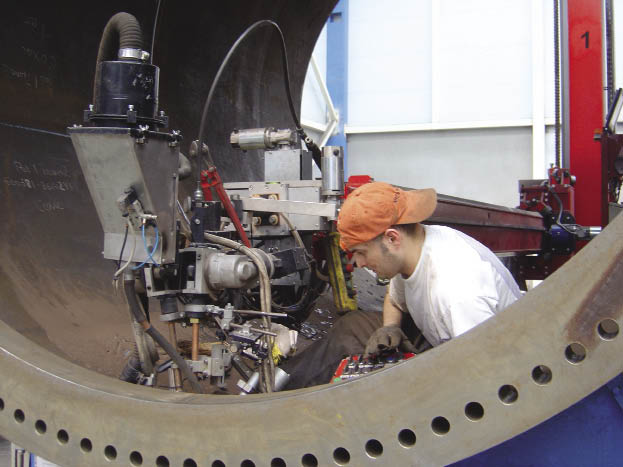
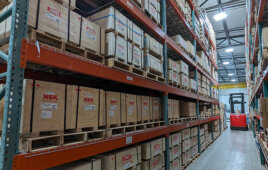
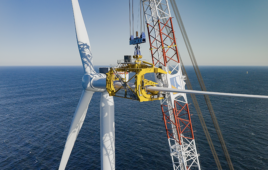
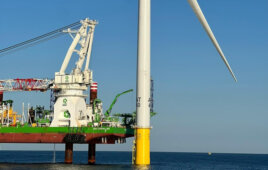
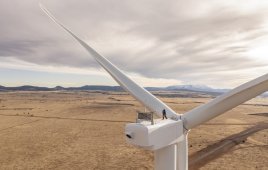
It would be interesting to know what the percentage is now of the off-shore wind tower capacity around the world. In the UK they are increasing in numbers, size and design both on and off-shore.
Certainly the requirement for welding equipment in this industry sector has been in demand.